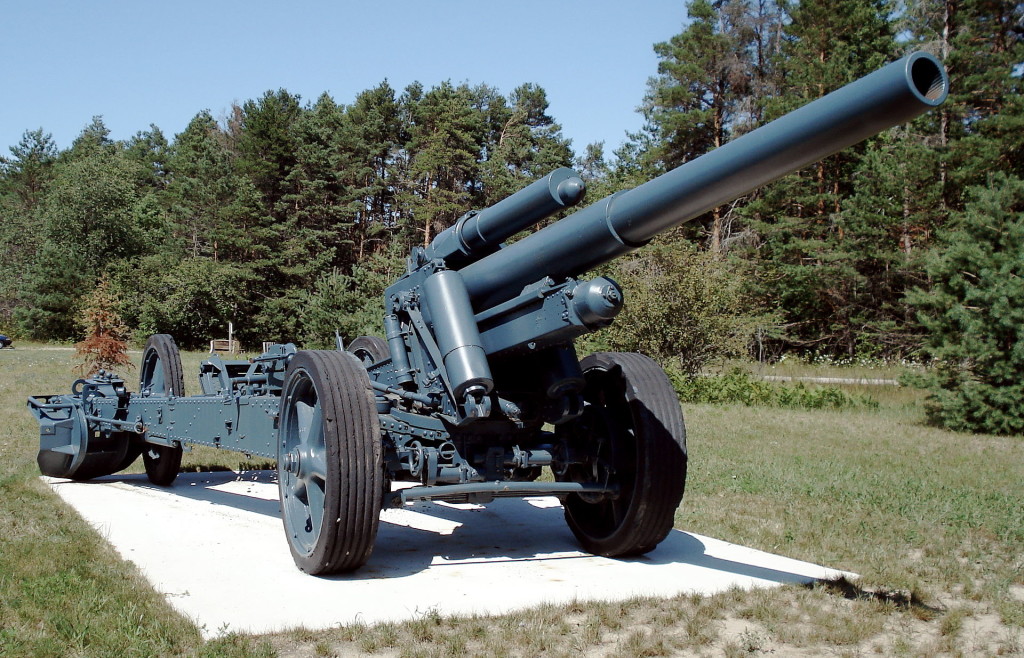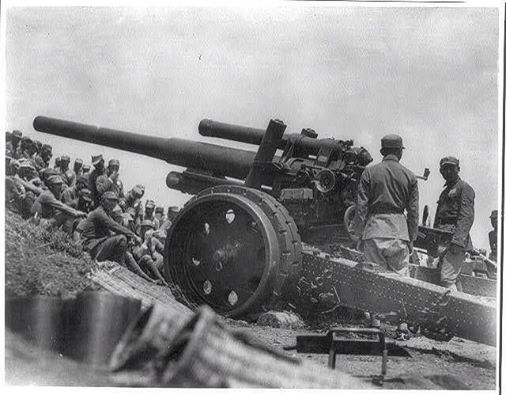‘Evergreen’
- By Peter Harmsen
- 20 July, 2014
- 1 Comment
 China and Germany were involved in close military cooperation in the 1920s and 1930s, manifested for example in the dispatch of a small but influential corps of German advisors to the Chinese Army. The cooperation also involved rather large shipments of German weapons and equipment to China. Among these weapons was the 15 cm schwere Feldhaubitze 18 or sFH 18, or in English “15 centimenter heavy field howitzer, model 18.”
China and Germany were involved in close military cooperation in the 1920s and 1930s, manifested for example in the dispatch of a small but influential corps of German advisors to the Chinese Army. The cooperation also involved rather large shipments of German weapons and equipment to China. Among these weapons was the 15 cm schwere Feldhaubitze 18 or sFH 18, or in English “15 centimenter heavy field howitzer, model 18.”
The howitzer, nicknamed “Immergrün”, or “Evergreen”, was a product of interwar developments in military technology, which put great emphasis on artillery- understandably so, as artillery had been the main killer of men during the Great War from 1914 to 1918. More soldiers died in their trenches being shelled by an unseen foe than were killed while storming across no-man’s-land into enemy machinegun fire.
The howitzer saw its first combat use when full-scale war broke out between China and Japan in 1937. It proved an efficient weapon and was more than an even match for any artillery that Japan was able to deploy at the time.

‘Evergreen’ in Chinese service, late 1930s
It marked a rare moment for China to actually be superior to its Japanese foe in technological terms, and it forced planners in Tokyo to allocate more resources into an intensified R&D effort for field artillery.
China was not the only foreign power to use the sFH 18. Germany’s allies Finland and Italy adopted it, as did the Blue Division, a Spanish unit serving on the Eastern Front during World War Two. It was widely used after the war by a number of East European armies.



 Copyright © 2024
Copyright © 2024
Do you know if the German advisors included any Luftwaffe pilots?